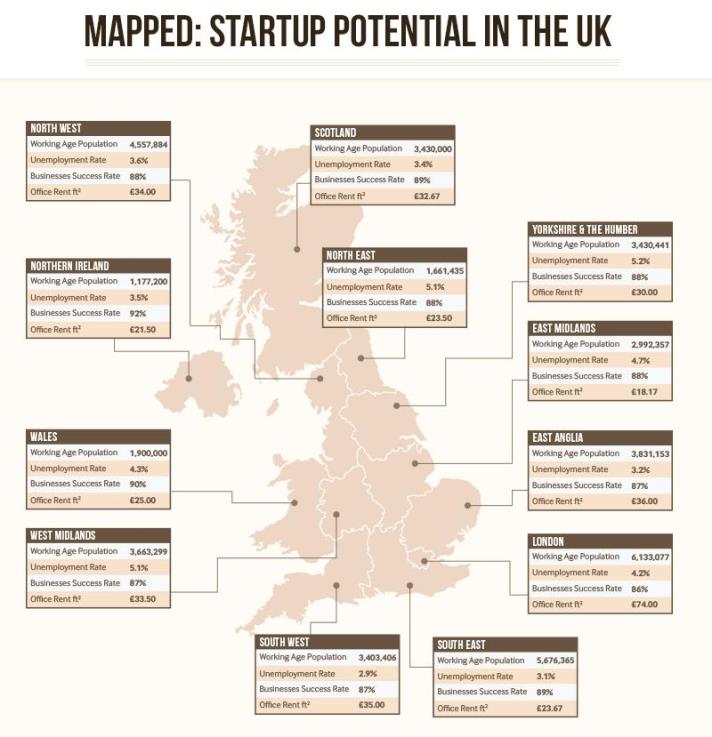Despite what most people think, the creative industry is thriving. So much so, that in 2017, the value of the sector stood at £101.5bn — which was a significant increase from its £94.8bn valuation back in 2016.
The field itself is extremely viable too. There were around 80,000 jobs created in 2017, and that figure doesn’t seem to be slowing down anytime soon.
However, there are many different sub-industries that make up this sector. This includes: advertising and marketing, architecture, crafts, design (product, graphic and fashion), film, television, video, radio and photography, IT, software and computer services, publishing, museums, galleries and libraries, music, performing and visual arts, animation and visual effects, video games and heritage.
With so many diverse entities, they all require someone creative. However, one area (or talent) that can relate to all of these diversified roles is art. People are interested in this too, as the phrase ‘art jobs’ has around 40,500 searches per month on Google, which has notably increased over time. This highlights that there is an interest for paid work, and for many, that means transforming their current hobby into an actual income.
It takes passion
If you’ve got the passion and drive to excel your career in the arts, you’re already ahead of the competition. If you love what you do, you’ll welcome mass appreciation from others in the same field.
When it comes to unleashing your creativity, you need to offer a message in everything that you do. You need to tell a story, sell an experience, and be thought provoking while offering some sort of vulnerability in your work. Art is all about empowering every emotive feeling in your body and is definitely not about getting the perfect shot in the gallery for social media.
Studying for a job
For any industry, you should always strive to do well in school. It wouldn’t be fair to say that grades aren’t important and can open up a lot of doors, but it’s important to understand that they don’t determine your future.
Your first step will likely be taking Art as a GCSE in high school. Following the grade that they receive, this will determine whether they can then continue the subject as an A-Level, or at college where they will likely complete a Level 3. Students may have to sit a Level 2 at college if they failed their GCSE — however, this will be determined by the course leaders and a strong portfolio could push you straight onto Level 3.
During this time, you’ll likely host your own exhibition with other students and showcase your work to the public. This is an amazing thing to include on your CV and personal statement when it comes to the next academic step… university!
Some people don’t believe that you need to go to university to have a career in art, but some people do want to have that degree and as a community, we must respect that. However, in the last five years, there has been an evident decrease in the number of UCAS applications for Creative Arts and Design. The deadline analysis from January 2019 found that only 215,330 applied, in comparison to the 224,630 that applied the same time last year.
If you’re studying a history of art degree, your course will be heavily theory-based with a lot of written work. However, if you’re studying a subject such as fine art, expect this to be more practical with workshop-led lessons and tasks that may contribute to your final grade. Most undergraduate art courses last for three years in the UK — however, if you study abroad, this could be up to four years.
Best universities for the arts:
1. Royal College of Art
2. University College London
3. University of the Arts London
4. Goldsmiths, London
5. The Glasgow School of Art
6. Loughborough University
7. University of Oxford
8. University of Brighton
9. Edinburgh College of Arts
10. Lancaster University
Although a lot of people do go to university, some choose apprenticeships which can begin at the age of 16. This is for the artists who know exactly what they want to get into — whether this is costume design, graphics, visual effects, animation, product development or even resin art. The number of apprenticeships available are endless, and the stigma around getting them has finally been removed.
The great thing about these courses are that you learn in the job. You’ll likely be working full time and 100% be earning a wage too. From this experience, you’ll be able to work on real-life projects and familiarise yourself with the working environment of your respected field.
Whatever entry route you take, we’re looking forward to seeing your own framed art on our walls!
Sources:
https://www.creativeindustriesfederation.com/statistics
https://www.ucas.com/file/213911/download?token=MLJTV7GH
https://www.studying-in-uk.org/top-art-universities-in-uk/

























